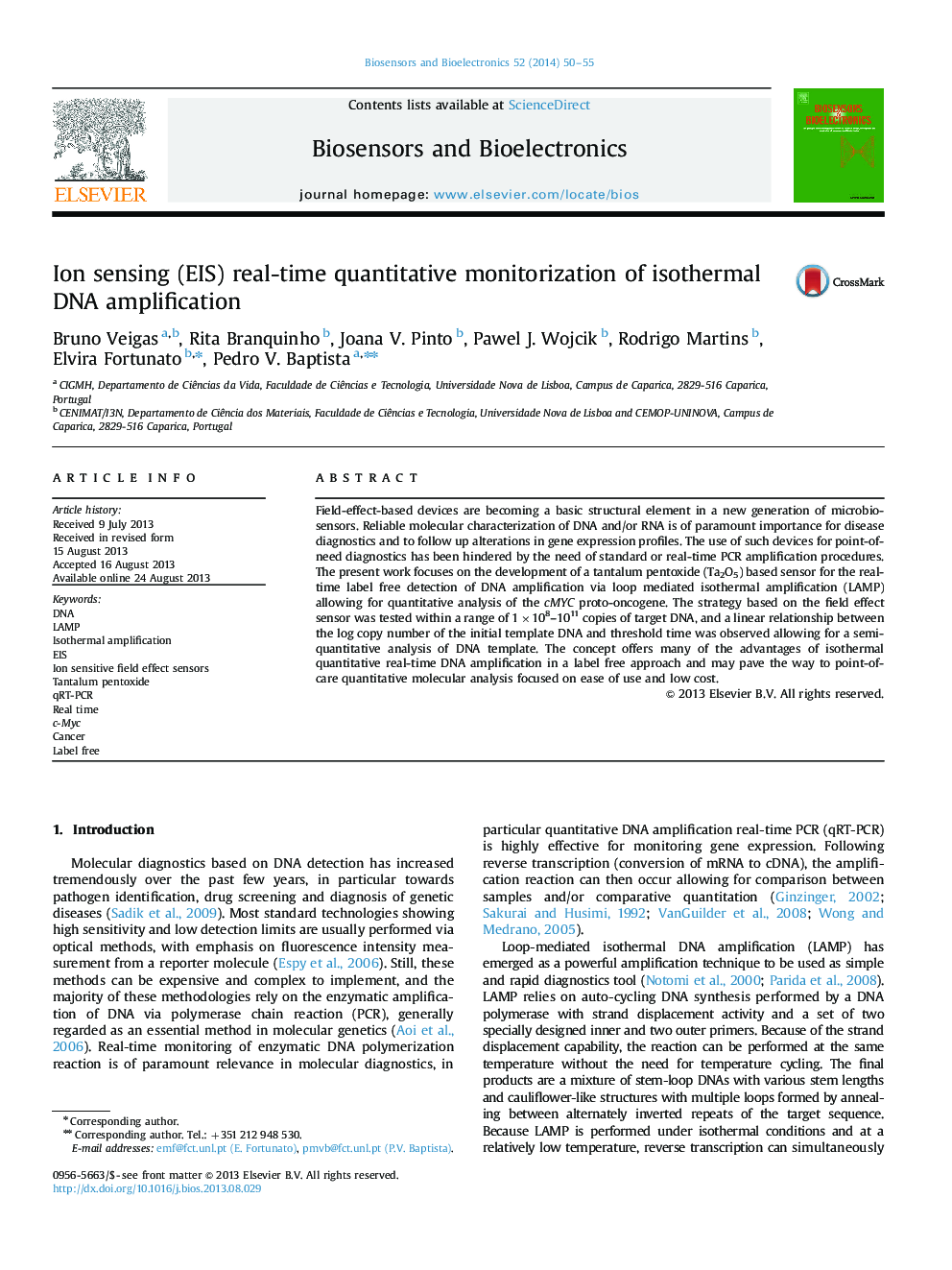| Article ID | Journal | Published Year | Pages | File Type |
|---|---|---|---|---|
| 866750 | Biosensors and Bioelectronics | 2014 | 6 Pages |
•Isothermal amplification of DNA (LAMP) on electrolyte–insulator–semiconductor sensor (EIS).•Quantitative real-time monitoring of LAMP via an ion sensitive filed effect sensor.•Response of EIS sensor compares to standard qRT-PCR.•Sensor for quantitative real-time isothermal amplification (qRT-LAMP) of c-MYC gene comparable to standard qRT-PCR.
Field-effect-based devices are becoming a basic structural element in a new generation of microbiosensors. Reliable molecular characterization of DNA and/or RNA is of paramount importance for disease diagnostics and to follow up alterations in gene expression profiles. The use of such devices for point-of-need diagnostics has been hindered by the need of standard or real-time PCR amplification procedures. The present work focuses on the development of a tantalum pentoxide (Ta2O5) based sensor for the real-time label free detection of DNA amplification via loop mediated isothermal amplification (LAMP) allowing for quantitative analysis of the cMYC proto-oncogene. The strategy based on the field effect sensor was tested within a range of 1×108–1011 copies of target DNA, and a linear relationship between the log copy number of the initial template DNA and threshold time was observed allowing for a semi-quantitative analysis of DNA template. The concept offers many of the advantages of isothermal quantitative real-time DNA amplification in a label free approach and may pave the way to point-of-care quantitative molecular analysis focused on ease of use and low cost.
